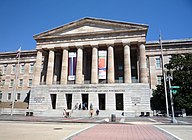Fichier:Ten-sqúat-a-way.jpg

Taille de cet aperçu : 493 × 599 pixels. Autres résolutions : 197 × 240 pixels | 395 × 480 pixels | 632 × 768 pixels | 843 × 1 024 pixels | 2 006 × 2 437 pixels.
Fichier d’origine (2 006 × 2 437 pixels, taille du fichier : 5,42 Mio, type MIME : image/jpeg)
Historique du fichier
Cliquer sur une date et heure pour voir le fichier tel qu'il était à ce moment-là.
| Date et heure | Vignette | Dimensions | Utilisateur | Commentaire | |
|---|---|---|---|---|---|
| actuel | 11 septembre 2021 à 05:07 |  | 2 006 × 2 437 (5,42 Mio) | Kevin1776 | higher resolution from Smithsonian |
| 12 août 2008 à 21:56 |  | 1 151 × 1 400 (172 kio) | Robfergusonjr | {{Information |Description={{en|1=Ten-sqúat-a-way, The Open Door, Known as The Prophet, Brother of Tecumseh. “The ‘Shawnee Prophet,’ is perhaps one of the most remarkable men, who has flourished on these frontiers for some time past. This man is br |
Utilisation du fichier
La page suivante utilise ce fichier :
Usage global du fichier
Les autres wikis suivants utilisent ce fichier :
- Utilisation sur ar.wikipedia.org
- Utilisation sur br.wikipedia.org
- Utilisation sur cv.wikipedia.org
- Utilisation sur de.wikipedia.org
- Utilisation sur en.wikipedia.org
- Utilisation sur en.wikiquote.org
- Utilisation sur es.wikipedia.org
- Utilisation sur fi.wikipedia.org
- Utilisation sur hr.wikipedia.org
- Utilisation sur hu.wikipedia.org
- Utilisation sur id.wikipedia.org
- Utilisation sur it.wikipedia.org
- Utilisation sur ko.wikipedia.org
- Utilisation sur pl.wikipedia.org
- Utilisation sur pt.wikipedia.org
- Utilisation sur ru.wikipedia.org
- Utilisation sur sh.wikipedia.org
- Utilisation sur simple.wikipedia.org
- Utilisation sur sk.wikipedia.org
- Utilisation sur sv.wikipedia.org
- Utilisation sur uk.wikipedia.org
- Utilisation sur www.wikidata.org



